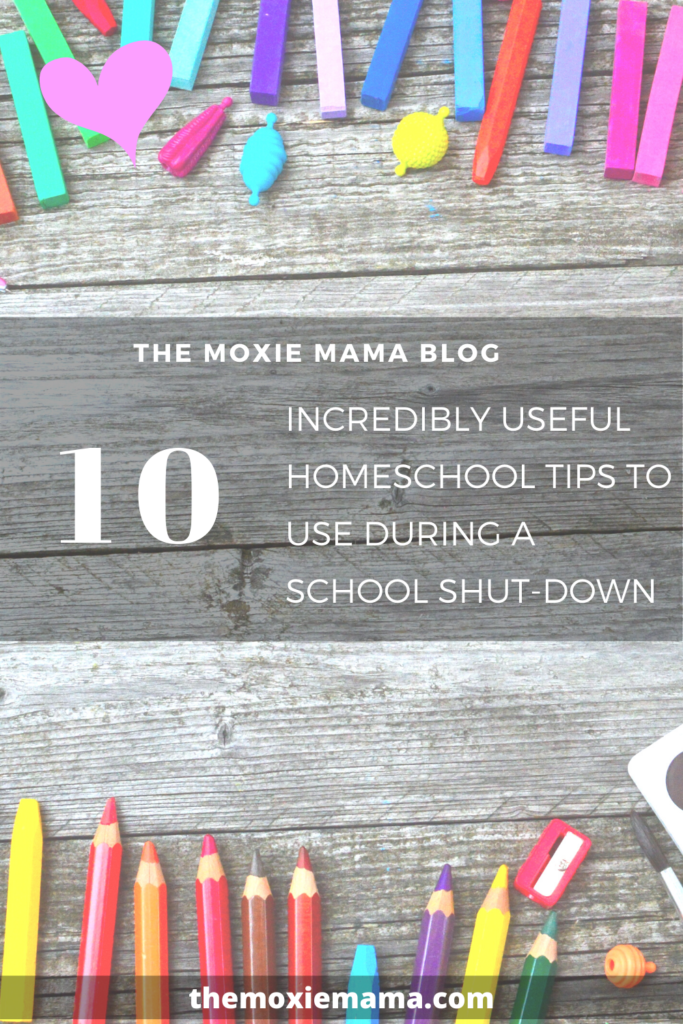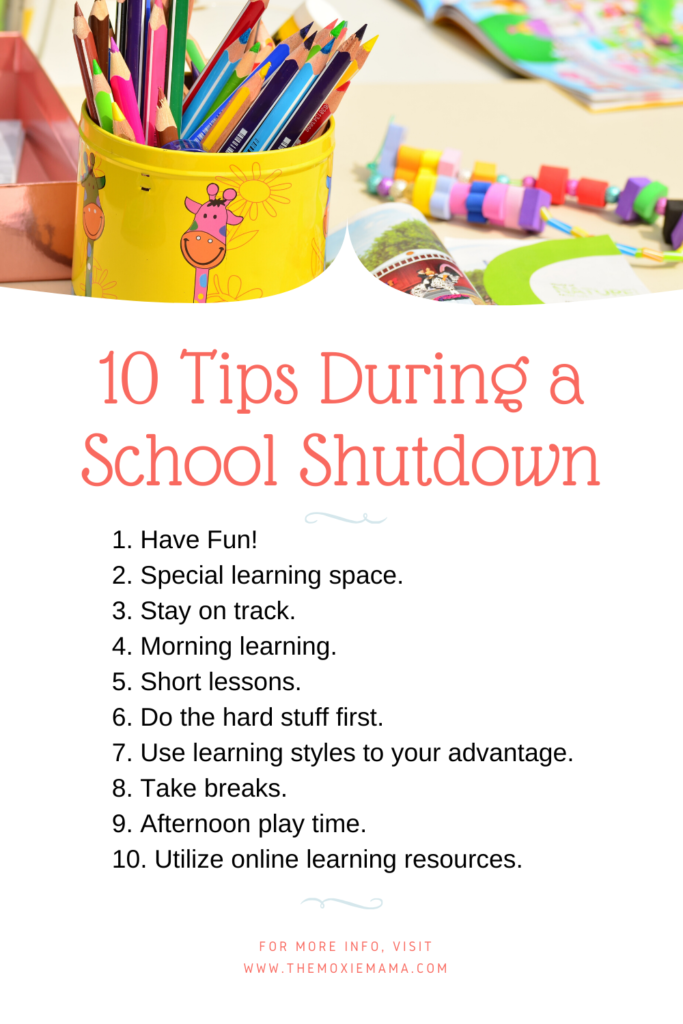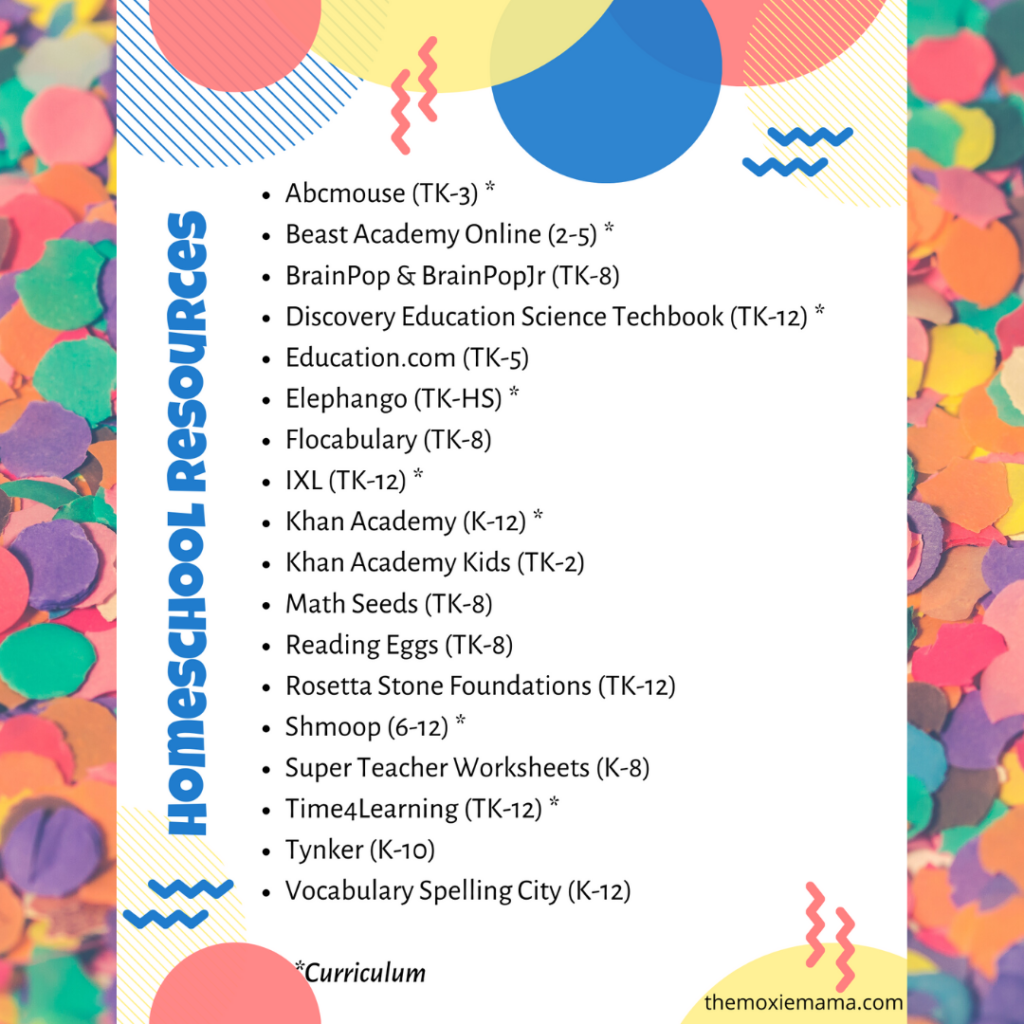
When we lived in California, we homeschooled our children. It was an exciting, fun, and interesting time in our home. Our kids loved being able to do their schoolwork in their pj’s and being finished with “school” by noon and I didn’t have to deal with school drop offs and pick ups. Win-win!
However, when we moved to the Midwest, the homeschooling rules were much more obscure, and after an extremely stressful move across the country, neither my husband nor I were in any position to learn the new homeschool rules. With my husband needing to start his new job, and me having to unpack an entire house, we decided to place them in school. It was a hard day for me when I made this choice but we researched and found a fantastic little private montessori-type elementary school that believes in exploration and play. It has been such an excellent balance of the way we taught in our homeschool and a traditional school.
Last week we found out all of the schools in our state were going to close, due to the Coronavirus. You can imagine my surprise and delight when we found out we will be homeschooling again for the unforeseeable future. My kids and I are very excited about homeschooling again. But while I was planning this week’s lessons, it struck me that many parents who have NEVER had the opportunity (or desire) to homeschool their children are now forced to do so ready or not.
I wanted to give some tips as a prior homeschool parent on how to get through the next few weeks of teaching from home. Whether you need to gather your own curriculum or your school district/school will be providing curriculum, these tips will help you and your kids to remain sane during this time of school shut-down and beyond.

- Have Fun. Just have fun with it! Turn lessons into games, act out reading assignments, or just offer incentives–like stickers or goodies for a good job. When you have fun, your kids will have fun.
- Special space. Have a dedicated space for “school.” For us, we used the dining room table. But other homeschool families I know have taught on the sofa, in the backyard, even at the kitchen counter. Wherever you choose, make it a fun and comfortable place to learn.
- Stay on track. Unless you are doing online/video chat with your child’s school, plan to have your homeschool begin at their regular school start time. This will help your child to stay on a schedule while out of the physical classroom. Additionally, try to keep normal bedtimes to ensure maximum learning potentials.
- Morning learning. Plan to end your homeschooling by noon (or within 4 hours, whichever comes first). Kid’s attention spans in the virtual and home environments are shorter when they are not engaged by their teachers and peers.
- Lessons. The lessons you teach don’t need to be very long to be meaningful and effective. When we homeschooled, each subject learning and lesson lasted 30 minutes or less. This may seem too short for many parents that have never homeschooled before, but be assured your child is still get a good education. At school, teachers are dealing with 25 children or more in the classroom, and this takes much more time for teaching and learning. When you homeschool, you are only teaching your children, so lessons go by so much faster.
- Do the hard stuff first. Work on the subjects your children are having a hard time with, like math or science, first thing in the morning when everyone is more awake and alert. Save the easier subjects for last.
- Use learning styles to your advantage. Take advantage of the various learning styles–like hearing, seeing, and doing–to help your schooling at home curriculum feel more like play and less like work and improve retention.
- Take breaks. If you and/ your children are feeling frustrated, take a short break. Take a quick walk outside and get fresh air, have a snack, or play a short game together.
- Afternoon time. Leave the afternoon open for lunch, outdoor play/exploring, independent reading, and rest time. Being at home and learning can make even the most mellow child a little stir crazy.
- Learning resources. If you are having to find your own curriculum, use online resources. Websites, apps, and online videos (Youtube and Khan Academy are our favorite) are great sources of curriculum. When we homeschooled, we used some of the following websites and apps:
- Abcmouse (TK-3) *
- Beast Academy Online (2-5) *
- BrainPop & BrainPopJr (TK-8)
- Discovery Education Science Techbook (TK-12) *
- Education.com (TK-5)
- Elephango (TK-HS) *
- Flocabulary (TK-8)
- IXL (TK-12)
- Khan Academy (K-12) *
- Khan Academy Kids (TK-2)
- Math Seeds (TK-8)
- Reading Eggs (TK-8)
- Rosetta Stone Foundations (TK-12)
- Shmoop (6-12) *
- Super Teacher Worksheets (K-8)
- Time4Learning (TK-12) *
- Tynker (K-10)
- Vocabulary Spelling City (K-12)
*Full Curriculum



